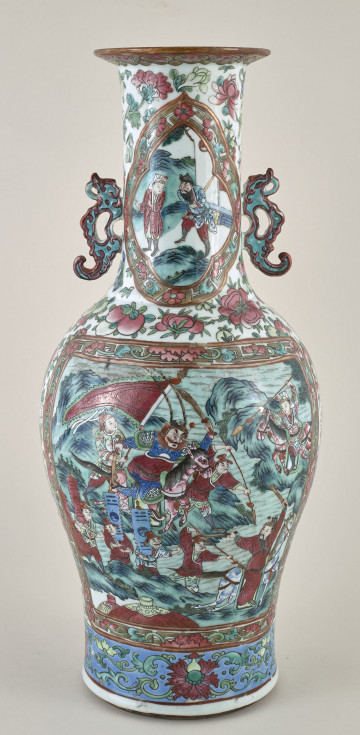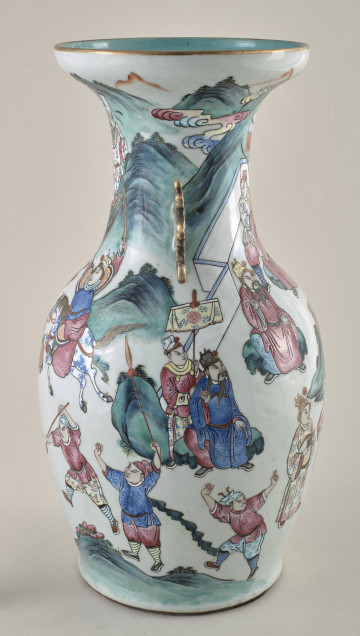
Chinese vase
19th / 20th century
Castle Museum in Łańcut
Part of the collection: Orient
Large plate of thick porcelain. Isolated bottom and wide rim. The dish features a painted decoration in blue, red and gold. On the bottom a vase with flowers and a tree branch is visible. In the rim, a ‘brocade’ pattern consisting of triple repeated fields with a blossoming plum motif. Floral motifs on the rim from the outside. It was created for export to Europe and decorated in the Imari style. The name of this style refers to the port in Japan where such porcelain was manufactured. It is located about 6 kilometres south-south of Arita, in the province of Hizen, on the island of Kyushu. Products were transported from that port to Europe. The history of Japanese porcelain dates back to the early 17th century. Dishes were made from local materials – kaolin clay – from the 17th century onwards, initially inspired by the Chinese ceramics. In time, the multicoloured glazed decoration combined with blue under-glaze became a characteristic feature of the style. These patterns were called imari. Imported by Dutch merchants, they were very popular in Europe at the end of the 17th century and became a permanent piece of furnishing in fashionable Rococo and Classicist parlours. In the 1730s the production of imitated imari began in Meissen, Delft and other manufactures. Japan, Arita, 18th/19th century.
Author / creator
Object type
Orient
Technique
painting, ceramic
Material
paint, porcelain
Creation time / dating
Creation / finding place
Owner
Castle Museum in Łańcut
Identification number
Location / status

19th / 20th century
Castle Museum in Łańcut

19th / 20th century
Castle Museum in Łańcut

19th / 20th century
Castle Museum in Łańcut
DISCOVER this TOPIC
Castle Museum in Łańcut
DISCOVER this PATH
Educational path